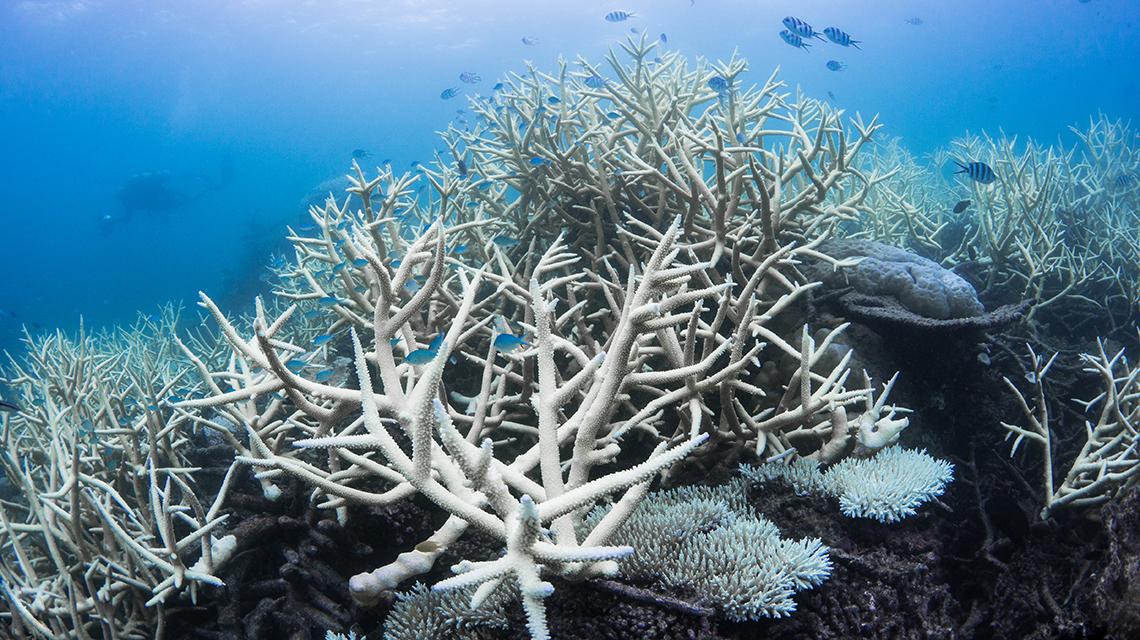Ever wondered how our lifestyles could lead to environmental disasters! Certainly not. Because turning ON the light of my room the entire night is such a small act that it can't harm the environment. Is it? YES, definitely. The practices in our daily life have a significant impact on the environment.
Ocean acidification is an example of an environmental issue whose causes are traced back to our daily life practices. The effects of these practices vary from alteration of the marine ecosystem to food security and ecological disaster in the long run.
The average pH of the ocean is 8.25, which supports the marine ecosystem's everyday activities. The pH of oceans has decreased over the past decades, and now it is around 8.14. A suitable pH is required for marine plants and animals to perform their functions properly.
Ocean acidification is a serious environmental issue that will severely impact the ecosystem. But the question is, what exactly ocean acidification is?
Carbon dioxide from the atmosphere is combined with seawater, and after a series of chemical reactions, it increases the concentration of hydrogen ions. Ultimately, the pH of ocean water goes down, and the phenomenon is termed Ocean acidification. The reduced pH over an extended period affects the behavior of calcium-producing animals and non-calcifying animals.
Let's head out to the causes of ocean acidification.
Causes of Ocean acidification
The ocean absorbs around 30 percent of carbon dioxide from the atmosphere. The more significant the amount of carbon dioxide in the atmosphere is, the more will be absorbed by the atmosphere. So, increased concentration of carbon dioxide is directly linked with ocean acidification. The absorption of nitrogen oxides and sulfur oxides in water also reduces the pH of ocean water. However, acidification is relatively low as compared to carbon dioxide.
Ocean acidification is caused by several natural and anthropogenic activities. However, natural causes have little to no environmental impacts.
Burning of fossil fuel for industrial activities
With the rise of the industrial era, humans started burning fossil fuels and degrading their environment. Results were seen with an increasing concentration of pollutants in the air. Carbon dioxide is among those air pollutants whose concentration started increasing in industrialization. Now, the level of carbon dioxide in the atmosphere is around 450ppm.
Increase in Number of Motor Vehicles
The human population is exponentially increasing over the last hundred years. That most enormous number of people require transportation to move from place to place. However, with every passing day, the number of vehicles on roads increases. A documentary named "Under the dome" reported that people in China do not walk even the distance of a Block's length. They prefer to use their cars. Just imagine the population of the world and their transportation patterns. Obviously, transportation will create a massive impact on the carbon dioxide concentration of the atmosphere and ocean.
Transportation is the largest source of air emissions. Especially the fuel used in vehicles releases carbon dioxide and other pollutants in the air. It results in an increasing concentration of carbon dioxide.
THE OCEANS SOAK UP ONE-QUARTER OF OUR CARBON EMISSIONS — AND ARE TURNING ACIDIC
Land Use Change
Before the rise of the human population, mainly the land was wild - covered with forests. But agricultural and industrial eras changed land usage. The wild area has been converted into agricultural land, or industries are installed there. The remaining land is used by humans for their living. So, the natural land cover is totally altered within a century and a half.
Now, what happened with land-use change? How does it cause ocean acidification? Well, the answer is pretty simple. Forests are considered as lungs of nature. How nature can survive and perform well when the vital organ is being destroyed?
Agriculture and industrial activities release potent greenhouse gases, especially carbon dioxide, into the atmosphere. So, the individual human practices for food and comfort affect the whole ecosystem.
Effects of Ocean Acidification
Calcium carbonate is the building block of sea animals. It is the building block for shells and skeletons of life in seawater. The concentration of calcium carbonate is high in areas where life is present in water. Thus, more calcium for calcifying organisms to sustain life. Nevertheless, with the increasing concentration of carbon dioxide, oceans absorb more fraction of it and make the water undersaturated with life-sustaining calcium carbonate. This affects the ability of organisms to produce and maintain their shells.
Since the industrialization era, the pH of the ocean surface has fallen by 0.1. Although it looks like a small change, the pH scale is logarithmic. A figure of 0.1 represents a 30 percent increase in acidity. If the emission scenario remains the same, acidity near the ocean surface will be 150 percent higher at the end of this century. Oceans haven't experienced this pH level in the previous 20 million years.
Impact on Biological life
A disaster for one organism could be an opportunity for other organisms. Algae and seagrass benefit from increasing carbon dioxide concentration as it helps them carry out photosynthesis. On the other hand, a decrease in the concentration of calcium carbonate due to acidification has a dramatic effect on calcifying organisms. It may alter the whole ecosystem. Humans will definitely be affected by this because a large population depends on seafood. Change in the aquatic ecosystem might cause food security.
Low pH reduces the ability of coral reefs to produce their skeleton. Another study has shown that anthropogenic carbon dioxide is causing under saturation in aragonite.
Solution
Since ocean acidification is linked with human activities, a change in human habits and practices could be effective to reduce its disastrous impacts. Move to a sustainable lifestyle such as use of renewables and chose cycling or walk in place of vehicles can make a significant difference.
Every human activity has an impact on its environment. A rise in human population and intensive industrial practices increase the emissions in air. Since ocean absorb the pollutants from air, its pH reduce that makes the aquatic ecosystem at risk. We, humans can opt alternative options which are more sustainable to minimize the ill-effects of ocean acidification.


